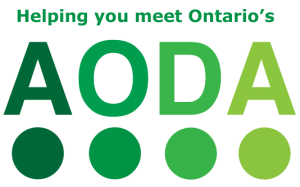With the explosion of information technologies available today, there is a high demand for educational materials to be provided in formats beyond the conventional printed text. Knowledge and proficiency in using the internet, digital file sharing, and other technologies has led students to access information in various ways. Rather than offering educational materials in print only, providing alternative format materials allows all persons, inclusive of all abilities, to access the information they need. There are over 3 million Canadians who are diagnosed with a print disability and cannot access print the standard way (CELA, 2017); therefore, it is good practice to offer alternative formats, such as electronic, Braille, audio, and large print versions of educational materials.
Alternative vs. Accessible formats
Everyone’s needs are different. Educators and academic organizations should not only strive to provide alternative formats for their students, but also assess if the alternative format provided are accessible for students—for example, is the digital format provided able to be properly read by screen reader software? The key is to understand the needs of each student who cannot access standard print, and try to find an alternative format that meet their requirements. This will help students acquire the same information as their peers and support their educational growth.
Why provide alternative formats?
Equality: Everyone has a right to access public information. When persons with a disability are unable to gain access to a document due to the inflexible format it is provided in, they are being denied their right to access. It also complies with AODA’s Accessible Information and Communications requirements which mandate that educational and training resources and materials are made accessible.
For more information on alternative formats, click on the questions below:
Types of alternative formats – Alternate format materials are electronic, audio, Braille, or large print versions of standard print educational materials
Who can benefit from alternative formats? – describes the benefits of using these in the educational context.
Who can provide alternative formats – providers
What does it mean to be conversion ready? – Conversion ready information means that educational information and communications are readily available to be converted into alternative formats
How to create alternative formats? – presents the process of creating various types of alternative formats
References
Centre for Equitable Library Access (CELA). (2017). CELA – About us. Retrieved from http://iguana.celalibrary.ca/iguana/www.main.cls?surl=CELA-AboutUs&theme=celadefault&lang=eng
________________________________________________________
How It Relates to the AODA legislation:
Alternative formats relates to the following sections of the Accessibility for Ontarians with Disabilities Act (AODA) Integrated Accessibility Standards, specifically some of the following sections in the Information and Communication Standards:
- Accessible Feedback Process
- Accessible Formats and Communication Supports
- Producers of Educational Training Material
- Training to Educators
Additional resources can be found on AccessForward’s website under Training Modules and Additional Training Resources, for example Training on Accessible Course Delivery and Instruction.
AODA Significance
- Alternative formats refers to the ways in which information is communicated other than through standard text (e.g. Electronic Text, Audio, Captioning, Braille). Learning about who uses alternative formats and how these are used assists educators with using inclusive approaches to teach, communicate, and share information.
- People interact, learn, and communicate in diverse ways. Learning opportunities are increased when flexible ways of engaging with learning materials are provided. Considering how people communicate is important for knowledge to be exchanged. Alternative formats take into account diverse ways of exchanging information.
- The AODA legislates that educational institutions and their employees know how to produce accessible or conversion ready versions of textbooks and printed material. Educators, teachers, and staff are to learn about accessible program or course delivery and instruction and be knowledgeable at interacting and communicating with people with disabilities who may use alternate formats.
Additional Resources
To learn how this section relates to the core principles of the AODA Customer Service regulation, visit the AODA page on SNOW.
To learn of ways to innovate, develop, and design for accessibility, visit OCAD University’s Inclusive Design Research Centre (IDRC) website and the IDRC’s floe project website.
